The labor market is constantly evolving, shaped by economic shifts, technological advancements, and changing workforce demographics. As industries adapt to new realities, understanding these trends becomes crucial for job seekers, employers, and policymakers alike.
Recent developments reveal a dynamic landscape, from the rise of remote work to the increasing demand for skilled labor in tech sectors. These trends not only influence hiring practices but also impact wage growth and job security. Staying informed about these changes can empower individuals to navigate their careers effectively and help businesses align their strategies with the future of work.
Table of Contents
ToggleOverview of Labor Market Trends
Labor market trends reveal critical shifts influenced by economic changes, technological advancements, and demographic transformations. Current job opportunities evolve rapidly as remote work becomes a standard practice for many organizations. This flexibility not only broadens the talent pool but also modifies hiring criteria to emphasize adaptability and digital proficiency.
Technological growth drives demand for specialized skills, particularly in sectors such as information technology and healthcare. Employers increasingly seek candidates with advanced competencies, resulting in wage growth across skilled labor markets. The focus on skills over traditional qualifications marks a significant change in hiring practices.
Moreover, workforce demographics impact labor trends. As millennials and Gen Z enter the workforce, demands for a better work-life balance and diverse workplace cultures increase. These generational shifts force organizations to adapt their strategies to retain talent.
In response to these dynamics, policymakers must understand the nuances of these trends. Continuous monitoring of labor market data supports informed decisions that benefit both employers and job seekers. Hence, staying updated on these trends proves essential for navigating the evolving landscape of employment.
Current Trends in Employment

The labor market is undergoing significant transformations, influenced heavily by remote work and the gig economy. These changes not only affect job availability but also shape workforce expectations and employer strategies.
Remote Work Opportunities
Remote work has solidified its position as a leading employment trend, with 28% of employees working remotely full-time as of 2023. This flexibility enhances job satisfaction and employee retention. Organizations that embrace remote options can attract diverse talent from various geographical areas, broadening their talent pool. Skills in digital communication and self-management have become essential, prompting employers to prioritize candidates who demonstrate these abilities. Additionally, remote work fosters innovation, as teams collaborate across time zones, encouraging diverse perspectives in problem-solving.
Gig Economy Growth
The gig economy continues to expand, with approximately 36% of the U.S. workforce engaged in freelance or contract work. This trend reflects a shift in personal preferences toward more flexible work arrangements. Workers increasingly favor project-based roles that provide autonomy and the ability to balance multiple income streams. Companies are adopting gig models for tasks requiring specialized skill sets, allowing for quicker responses to market demands. Furthermore, gig workers often possess diverse skill sets that benefit organizations, enhancing operational agility.
Skills in Demand
Skills in demand are crucial for navigating the evolving labor market. Both technical and soft skills are shaping hiring practices and workforce development.
Tech Skills
Tech skills dominate the current labor market landscape. High demand exists for expertise in areas such as cybersecurity, data analysis, artificial intelligence, and cloud computing. For instance, cybersecurity positions are projected to grow by 31% from 2019 to 2029, reflecting the urgent need for professionals capable of protecting sensitive information. Additionally, proficiency in programming languages like Python and JavaScript shows a 22% increase in job listings over the past year, underscoring the competitive advantage that tech-savvy candidates possess. Employers prioritize candidates with experience in digital tools and platforms, as these skills enhance team productivity and innovation.
Soft Skills
Soft skills also play a pivotal role in workforce dynamics. Communication, teamwork, problem-solving, and adaptability rank among the most sought-after skills by employers across various industries. The Golden Triangle of Skills Report indicates that 92% of recruiters prioritize soft skills in hiring decisions. Effective communication fosters collaboration, while problem-solving abilities enable teams to navigate challenges efficiently. Moreover, adaptability remains essential as organizations pivot amidst fluctuating market conditions. As remote work continues to reshape professional environments, workers demonstrating strong interpersonal skills stand out, ensuring their relevance in diverse settings.
Impact of Economic Factors
Economic factors significantly influence labor market trends, impacting job growth and globalization.
Inflation and Job Growth
Inflation creates varying effects on job growth across sectors. In a high-inflation environment, the cost of living rises, prompting wage increases. As salaries increase, businesses may face higher operating costs, leading to cautious hiring practices. For instance, in 2022, U.S. inflation reached 8.5%, impacting companies’ decisions to expand their workforce. Conversely, sectors like healthcare, where demand remains steady, can see job growth despite inflation. Employment in healthcare is projected to increase by 16% from 2020 to 2030, as aging populations require more services. Economists emphasize that maintaining a balance between wage growth and inflation is crucial for sustained job creation.
Globalization Effects
Globalization reshapes labor markets by enhancing competition and providing new opportunities. Companies increasingly outsource jobs to countries with lower labor costs, affecting domestic employment patterns. For instance, the share of U.S. manufacturing jobs that have moved overseas has reached 20% since 2000. This shift can lead to job losses in specific sectors, pushing workers to seek employment in emerging industries. However, globalization also creates jobs in sectors like technology and international trade, with U.S. exports projected to support over 11 million jobs by 2026. Thus, while globalization can lead to workforce displacement, it simultaneously fosters growth in innovative and high-demand sectors.
The labor market is undergoing significant transformation driven by economic shifts and technological innovations. As remote work becomes the norm and the gig economy expands, both employers and employees must adapt to new realities. The demand for specialized skills continues to rise, highlighting the importance of continuous learning and development.
Navigating these changes requires a proactive approach from job seekers and organizations alike. By staying informed and embracing flexibility, they can thrive in an ever-evolving professional landscape. Understanding these trends will be crucial for anyone looking to succeed in the future of work.








